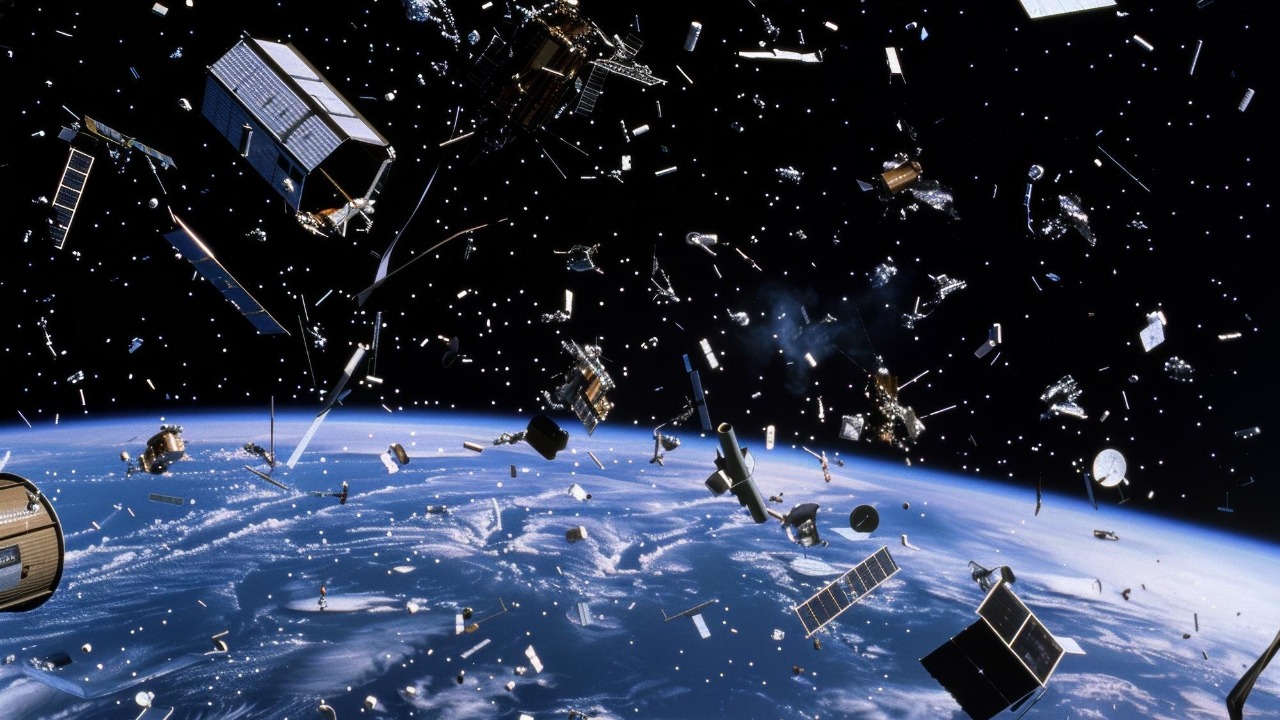
The rapid expansion of satellite constellations and the increasing accumulation of space debris pose significant threats to the ozone layer and overall space safety. Recent analysis has highlighted the harmful effects of satellites burning up during re-entry, releasing chemicals that severely undermine ozone recovery. Concurrently, policy changes such as the deregulation drive initiated by President Donald Trump could exacerbate these issues, potentially leading to a surge in rocket launches and further accumulation of space debris.
The Proliferation of Satellite Constellations
One of the main contributors to the growing space debris problem is the rapid expansion of mega-constellations, such as Elon Musk’s Starlink. These constellations, launched with the aim of providing global internet coverage, consist of thousands of satellites. However, as these satellites reach the end of their operational lives, they become defunct and contribute to the accumulation of debris in low Earth orbit.
Current trends suggest that the number of objects in orbit could double within the next decade. This projection is based on the increasing rate of satellite deployments, which is expected to continue due to the deregulation of space launches and the growing demand for satellite-based services. This rapid expansion of satellite constellations and the resulting increase in space debris pose significant challenges for space safety and the preservation of the ozone layer.
Mechanisms of Ozone Layer Damage from Re-Entry
The process of satellite re-entry and burn-up is a major contributor to ozone layer damage. As satellites burn up, they release materials like aluminum oxide and nitrogen oxides into the atmosphere. These chemicals directly undermine efforts to recover the ozone layer, as they react with ozone molecules and deplete the layer.
For instance, the re-entry of Starlink satellites on March 15, 2025, exemplifies this issue. Each re-entry event potentially depletes ozone at rates equivalent to historical CFC emissions. Scientific modeling suggests that unchecked re-entries could delay global ozone healing by years, posing a significant threat to the environment and human health.
Escalating Risks from Space Debris
The current scale of space debris is alarming, with over 36,000 tracked debris objects larger than 10 cm posing collision risks to operational satellites. These objects include defunct satellites, spent rocket stages, and fragments from collisions and explosions. Real-world incidents, such as near-misses involving active missions, highlight the growing threat of the Kessler syndrome, a scenario where cascading collisions could render certain orbits unusable.
Furthermore, debris from failed satellites, including those from commercial operators, endangers international space stations and future explorations. The increasing accumulation of space debris not only poses a physical threat to space assets but also complicates the safe navigation of spacecraft, potentially jeopardizing future space missions.
Policy and Deregulation Challenges
Policy changes, such as President Trump’s deregulation drive, could exacerbate the space debris problem. The executive order issued on September 26, 2025, eases launch approvals, potentially leading to a surge in unregulated satellite deployments. This could further increase the amount of space debris and pose additional challenges for space safety and the preservation of the ozone layer.
Moreover, the increase in orbital clutter could have significant impacts on astronomical research. The growing number of satellites and debris could obscure views of stars and hinder ground-based telescopes, limiting our ability to observe and study the universe. Scientists have called for international guidelines to mitigate these impacts and ensure equitable access to space for non-commercial purposes.
Broader Threats to Space Safety
The proliferation of satellites and space debris also heightens risks for crewed missions and GPS-dependent infrastructure. The probability of collisions increases with the growing number of objects in orbit, posing a significant threat to the safety of astronauts and the functionality of satellite-based services. A single debris event could disrupt critical systems like weather forecasting and telecommunications, affecting global services and economies.
Furthermore, the attribution of debris to specific nations’ launches could lead to geopolitical tensions. Disputes over responsibility for fragments could complicate international relations and hinder collaborative efforts to address the space debris problem.
Initiatives for Debris Mitigation and Decarbonization
Despite these challenges, there are ongoing efforts to decarbonise and declutter the skies. These include the development of active debris removal technologies, such as robotic capture systems, which could help reduce the amount of space debris. Industry commitments, such as SpaceX’s plans for controlled de-orbiting of Starlink satellites, also aim to reduce atmospheric pollution and mitigate the impact on the ozone layer.
International collaborations, like UN guidelines, are also being developed to promote sustainable practices in space. These guidelines aim to protect both the ozone layer and the orbital environment, ensuring the long-term sustainability of space activities. However, the effective implementation of these initiatives requires global cooperation and commitment, highlighting the need for comprehensive international policies and regulations.
More from MorningOverview